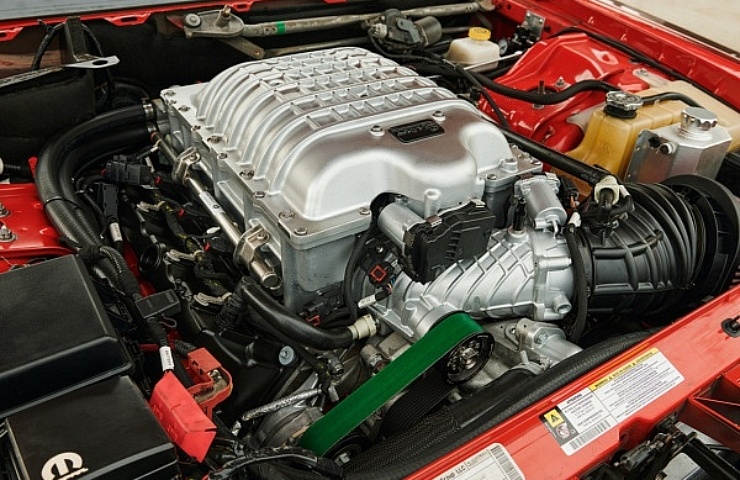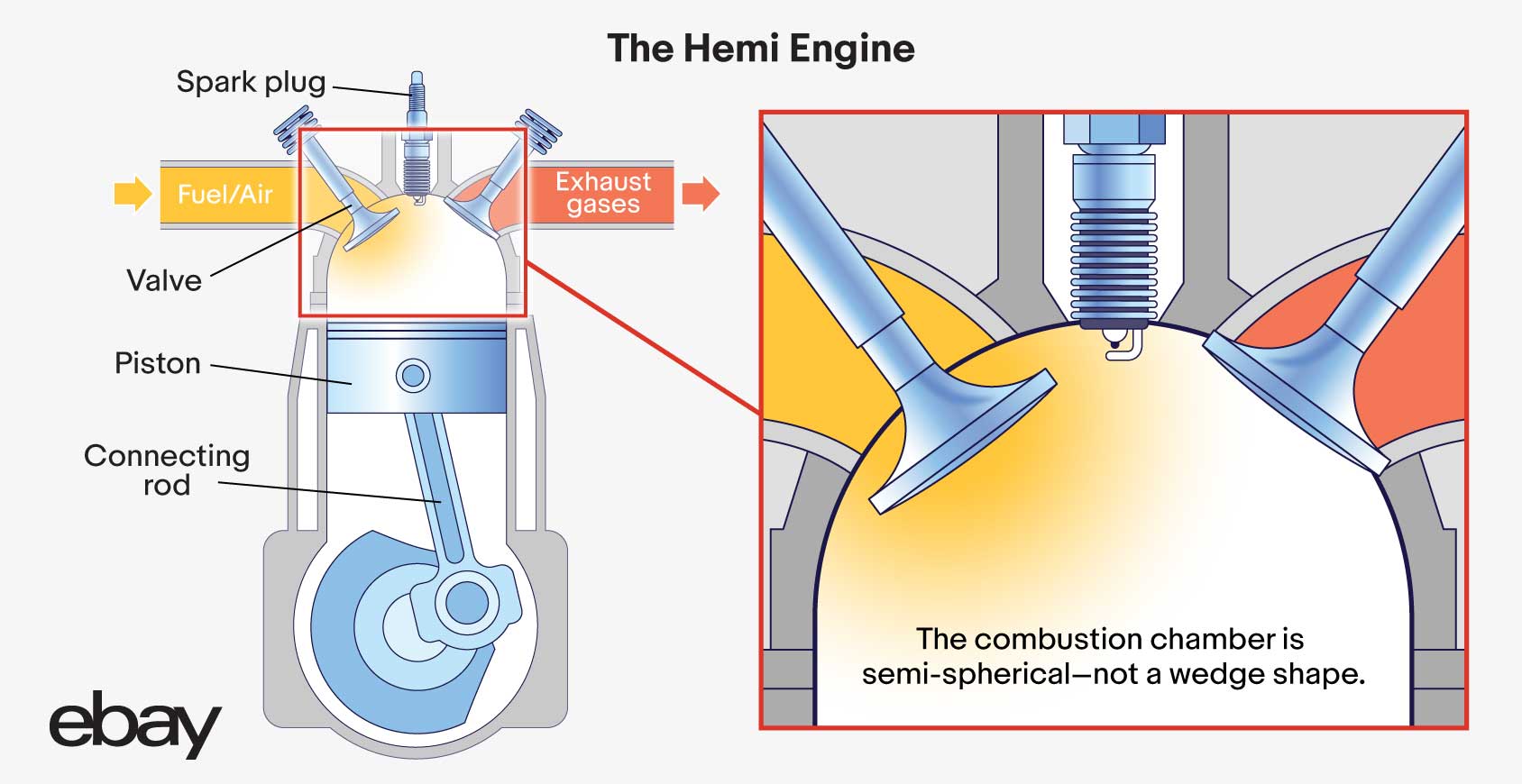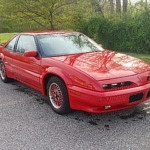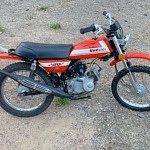Contents
Hemi History
“Hemi” is the popular name for an engine with a hemispherically shaped combustion chamber as opposed to the traditional wedge shape found in most engine designs.
In simple terms, the hemispherical shape delivers more pressure in the piston cylinder combustion chamber than the wedge shape. The more efficient air intake system and spark plug position cause earlier combustion, resulting in higher efficiency and power. Essentially, the fuel burns more quickly.
The intake and exhaust valves are also angled to match the dome-shaped chamber room. That means they can be larger, which maximizes intake and exhaust flow. The hemi setup is worth the somewhat more complex system to get the most out of the engine.
Since the hemi engine is inexorably linked to the Chrysler brand, many enthusiasts believe that the hemi engine was its brainchild. In fact, in 1901, a two-cylinder prototype of the hemi engine was invented by Allie Ray Welch of the Turscott Launch and Engine Company for use in a boat.
Chrysler wasn’t even the first automaker to build a hemi-powered vehicle. That distinction belongs to Pipe, a Belgian company that first used a hemi in 1905. Shortly after Pipe, European automakers Peugeot, Alfa Romeo, Daimler, and Riley embraced the hemi engine. These were not the powerful V-8 engines we think of today. Some were as small as two cylinders. The hemi soon found its way into early Duesenberg, Status, and Offenhauser race cars.
Chrysler’s first hemi came along during World War II with an experimental V-16 used in the P-47 Thunderbolt, which had a reported 500-mph airspeed. It met its demise with the advent of the jet engine, and the Thunderbolt never went into production.
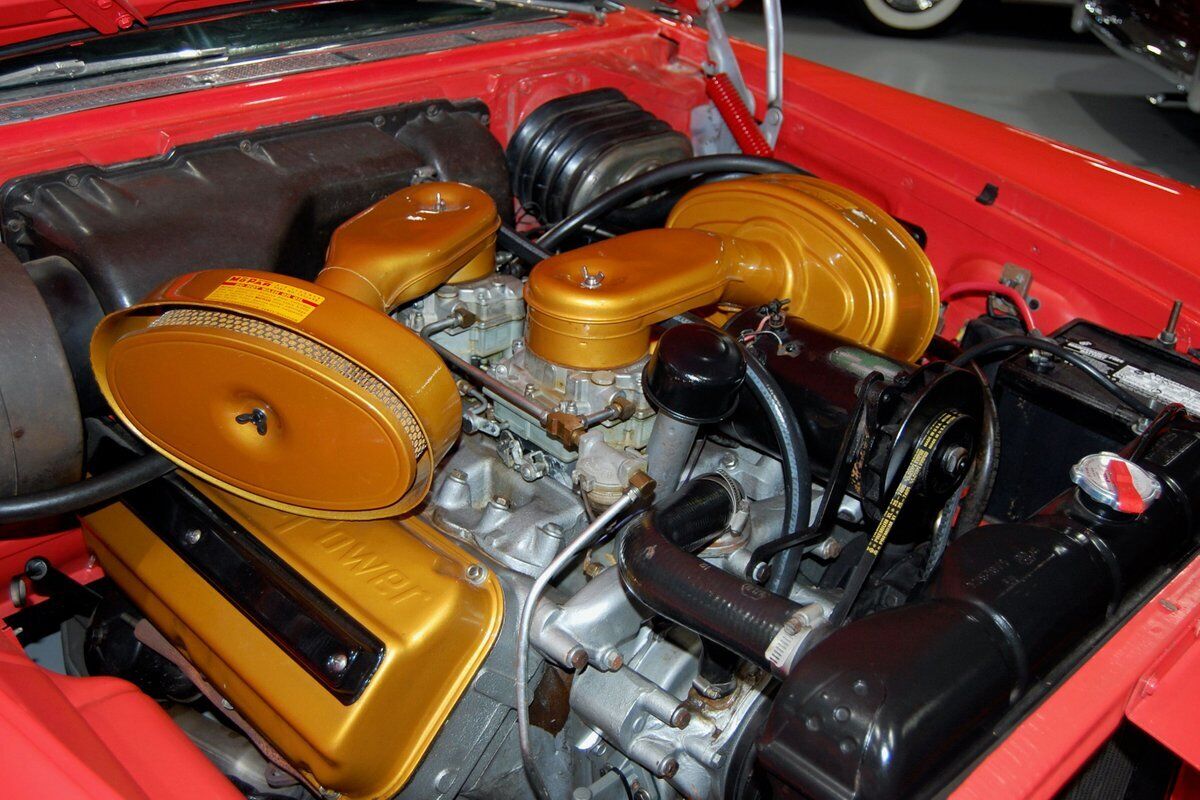
The 1957 Chrysler 300C dual-quad 392 cubic-inch Hemi V-8 engine was factory rated at 375 horsepower.
Not content to let all that aviation research and development go to waste, Chrysler put the technology into its vehicles, debuting a hemi V-8 engine in the 1950 Chrysler. The first FirePower engine—a 331-cubic-inch hemi V-8 with a two-barrel carburetor—produced 180 horsepower and was used from 1951 through 1955. A four-barrel carburetor was used on the 1955 Chrysler C-300, which produced 300 horsepower.
Oddly, Chrysler’s DeSoto and Dodge divisions also built hemi engines, but they were completely different and almost no parts were interchangeable. Chrysler’s Imperial division used a hemi with a FireDome name. DeSoto also had a version of the FireDome. Dodge named their hemi Red Ram.
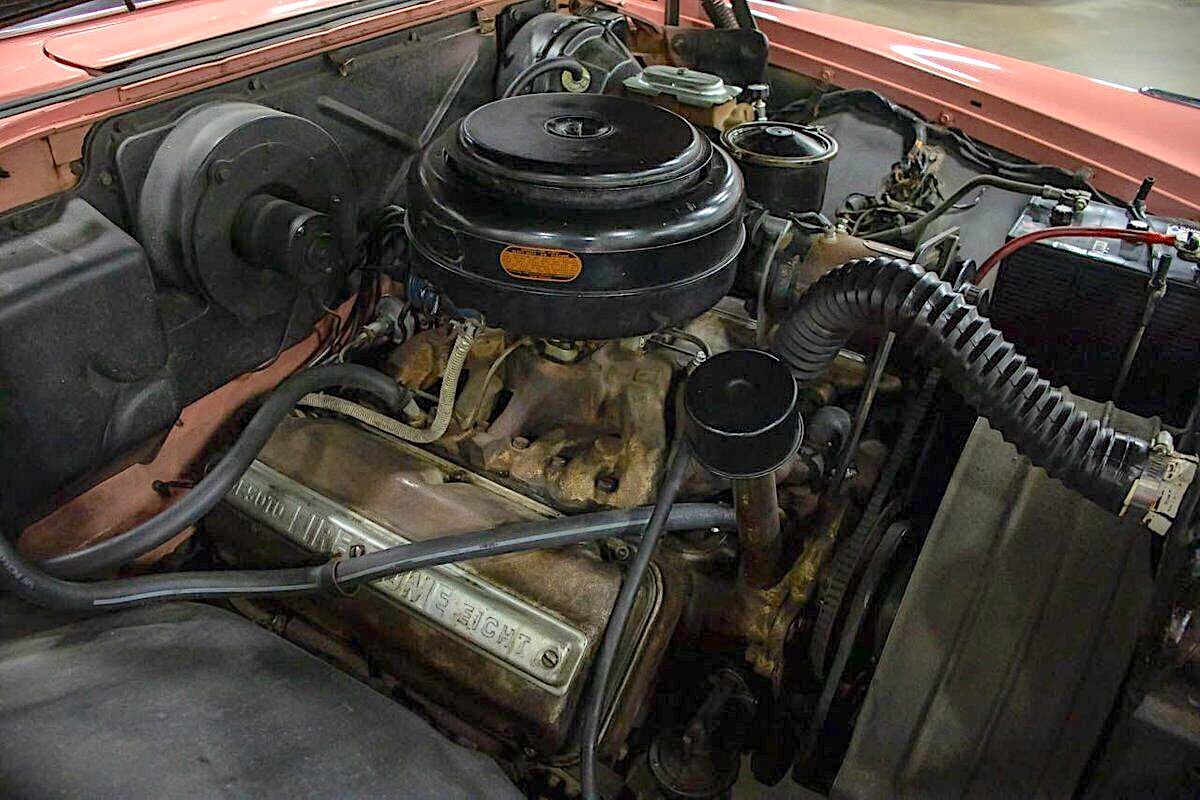
1955 Desoto Firedome 291 cubic-inch V-8 engine
By the end of 1958, the high-compression wedge cylinder engine configuration came into vogue, making ample horsepower at a much lower production cost and with interchangeable parts. Chrysler almost entirely ceased production of the hemi engine.
While all three words essentially mean the same thing—the engine has a hemispherically shaped combustion chamber—there is a difference in how and by whom they are being used. “Hemi” with a capital H is specific to engines built by Chrysler, FCA, Stellantis, or a division thereof. “HEMI” in all capital letters is specific to Dodge, Stellantis, FCA, Mopar, RAM, or Chrysler promotional advertising material, most often with a trademark. Finally, “hemi” generically identifies any engine with a hemispherical combustion chamber.
Hemi’s Racing Legacy
In 1964, Chrysler revived the hemispherical head design, and the first officially designated Hemi engines were reborn under the name Generation II Chrysler Hemi. The engines displaced 426 cubic inches and were intended as purpose-built race engines. NASCAR driver Richard Petty debuted the engine in the number 43 Plymouth Belvedere. So fast and powerful was the 426 Hemi, Petty lapped the entire field, winning the Daytona 500 in 3 hours and 13 minutes and leading 184 of the 200 laps, a record that still stands today.
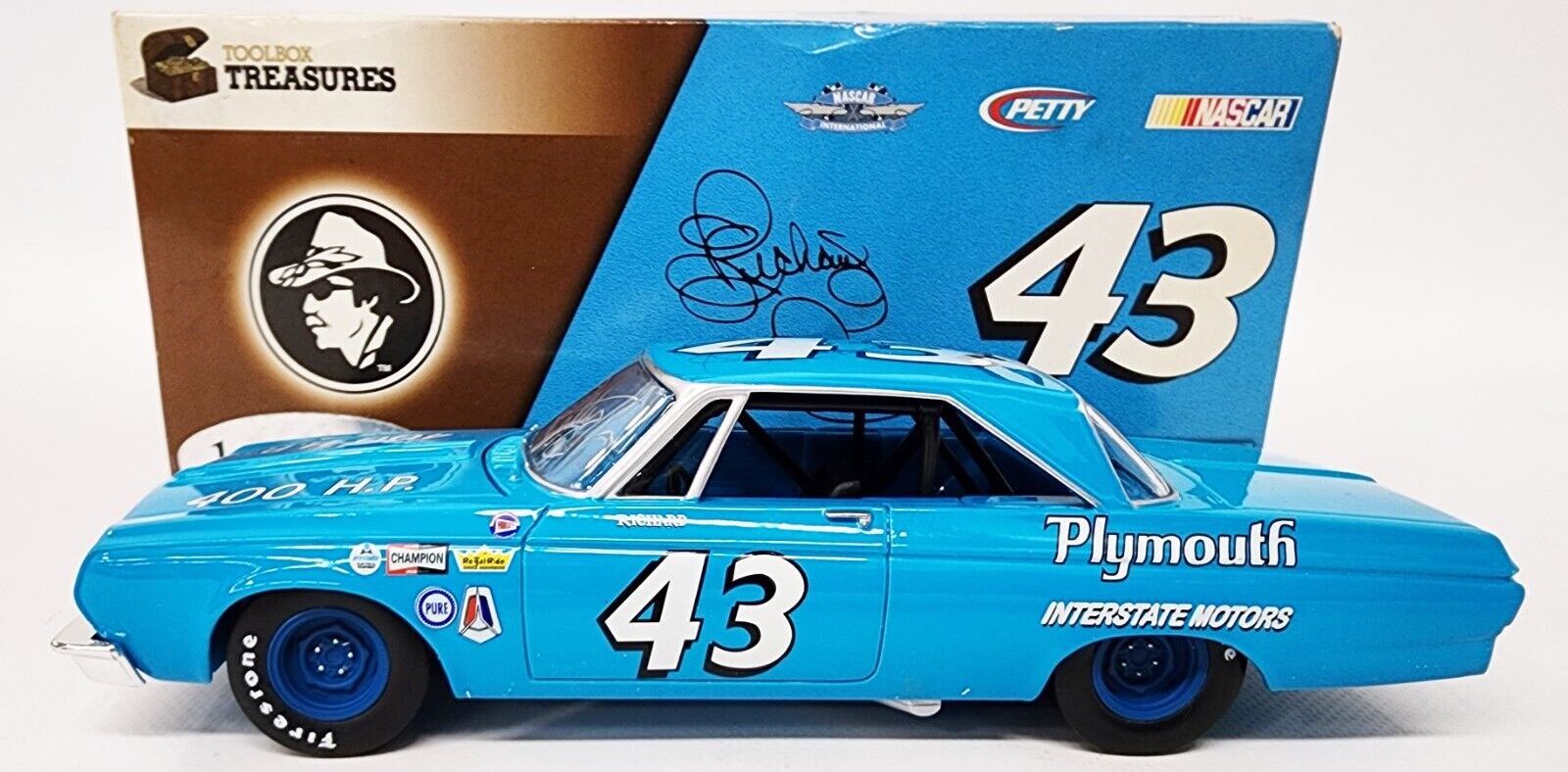
Toolbox Treasure’s die-cast tribute to Richard Petty’s #43 Plymouth Belvedere Daytona winner
On November 12, 1965, Bob Summers set the the land-speed record for wheeled vehicles on the Bonneville Salt Flats in Utah, driving the Goldenrod powered by four slightly modified 600-horsepower Chrysler 426 naturally aspirated Hemi engines. Goldenrod’s impressive record of 409.695 mph stood for 26 years.
Hemi-powered drag strip cars continued to set records on National Hot Rod Association strips even after production ceased. Engines used in top-fuel dragsters routinely exceeded 300 mph in the measured quarter mile.
The Street Hemi
The mid-1960s saw the rise of the Detroit muscle car era. GM introduced the Pontiac GTO, Chevrolet SS, Buick GS, and Oldsmobile 442. Ford had the Mustang Cobra Jet, Mach 1 and Boss 429, and Chrysler debuted 426 Hemi versions of the Plymouth Satellite, GTX, Road Runner, Dodge Charger, and Super Bee. The Hemi was unique in that it was available in various models, from bare-bones radio/heater delete versions to higher-priced deluxe models. In most instances, the 426 Hemi V-8 was a $900 option. These were mainstream cars that almost everyone wanted to own.
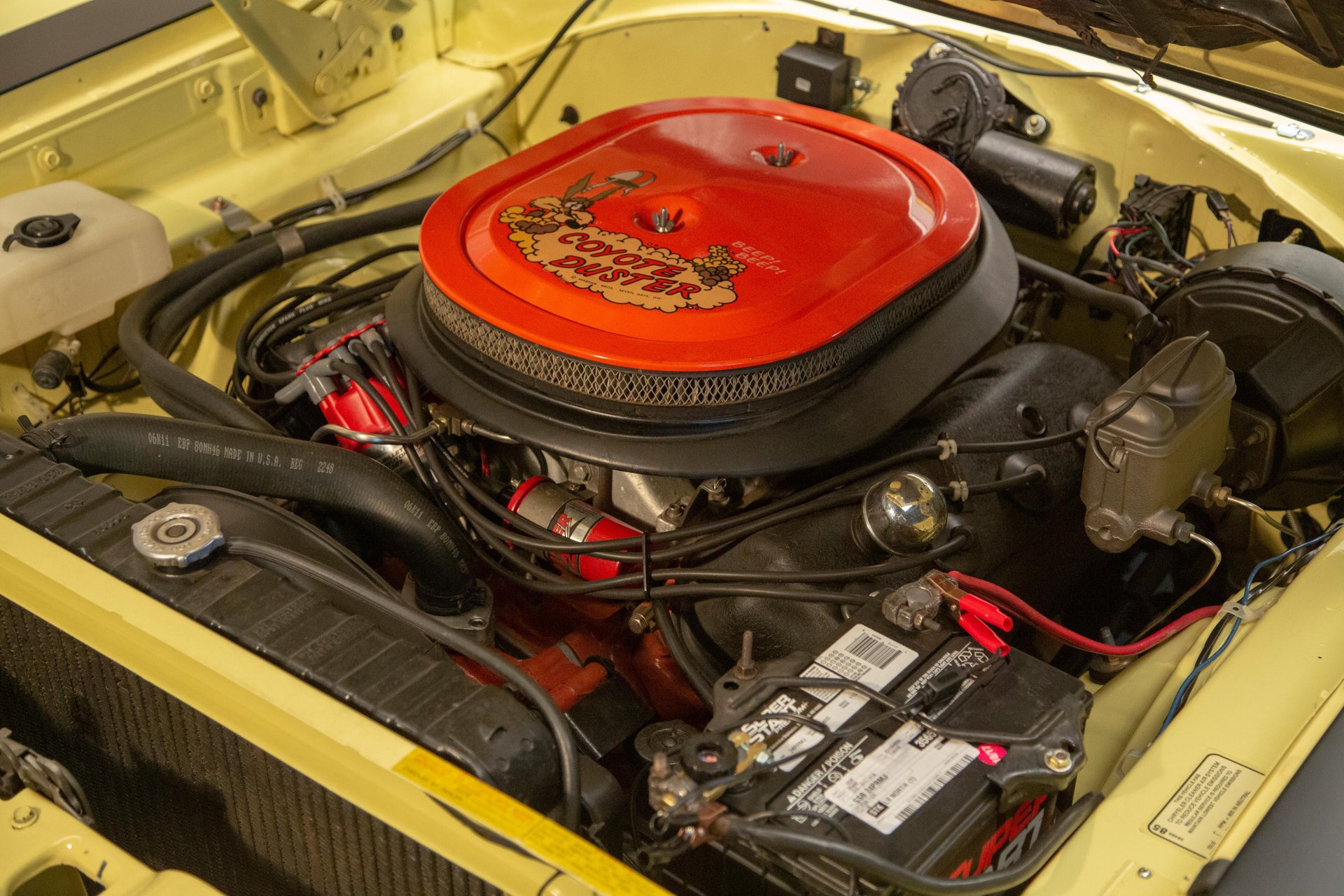
1969 Plymouth Roadrunner Hemi V-8 engine
By the early 1970s, the auto industry began transforming due to federal engine emission restrictions. Manufacturers developed engines that operated on low- or no-lead gasoline. New standards included engine smog pumps. Shortages drove the price of gas up dramatically. Gas-guzzling muscle cars with dumbed-down performance became expensive. Manufacturers discontinued most of them in favor of smaller, lighter, more fuel-efficient vehicles. In the end, just over 11,000 426 CID Hemi-equipped vehicles were sold in the muscle car era.
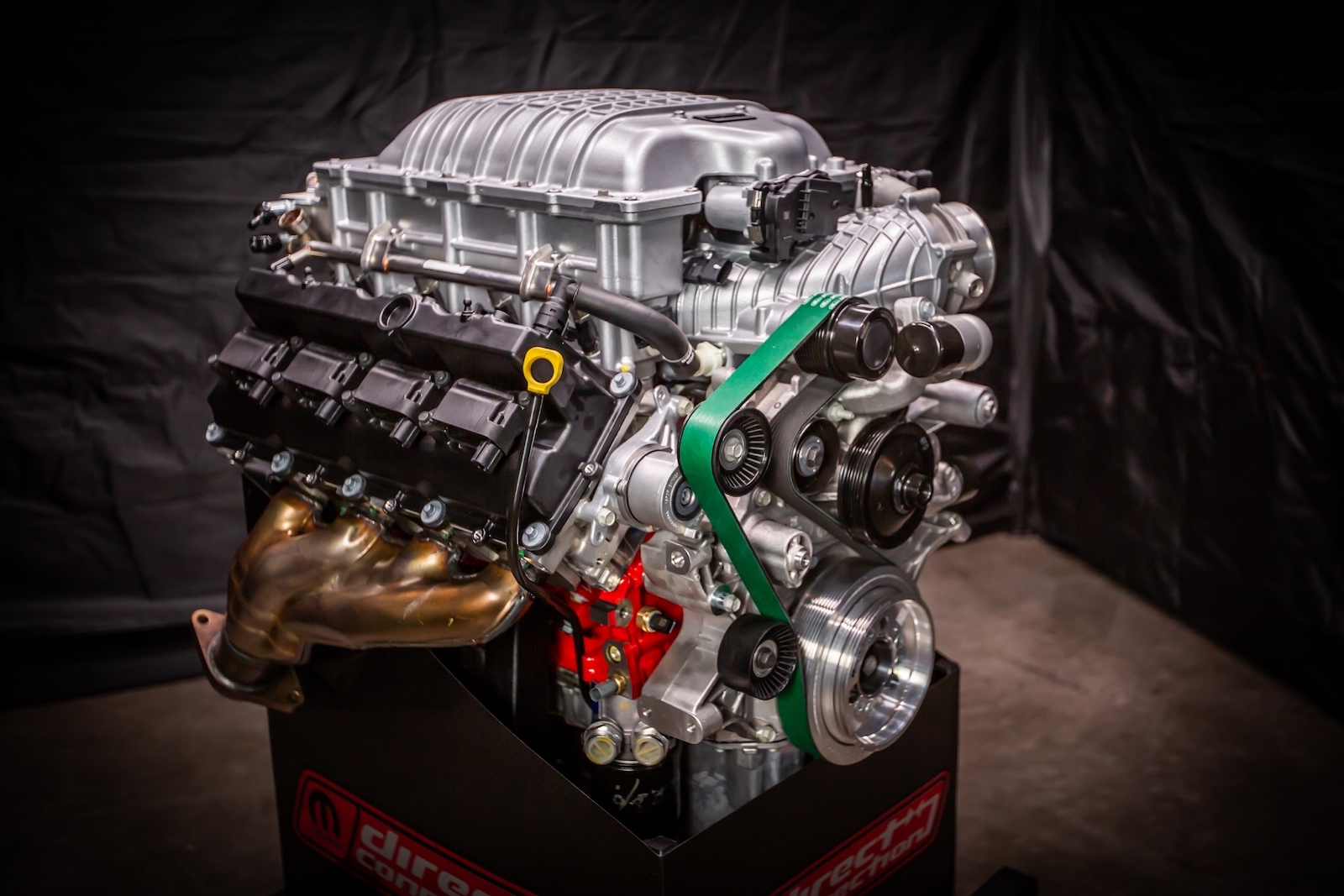
The Hellephant C170 crate engine delivers over 1,000 horsepower with E85 fuel. (Photo: Stellantis)
Today, cars with the original 426 Hemi under the hood are highly sought-after collectibles. It isn’t uncommon to find a Hemi-powered vehicle, or even just a Hemi engine—including the all-new 1,000-horsepower Hemi Demon Crate engine—on eBay Motors.
You Can Still Buy a New Hemi
In 2003, Chrysler introduced the third-generation Hemi, which is still used today. This new 5.7-liter Hemi was not designed for the racetrack but for the typical car buyer. In 2005, Dodge and Chrysler racing divisions put the 6.1-liter Hemi into SRT (Street Racing Team) models with more power and torque for more speed.
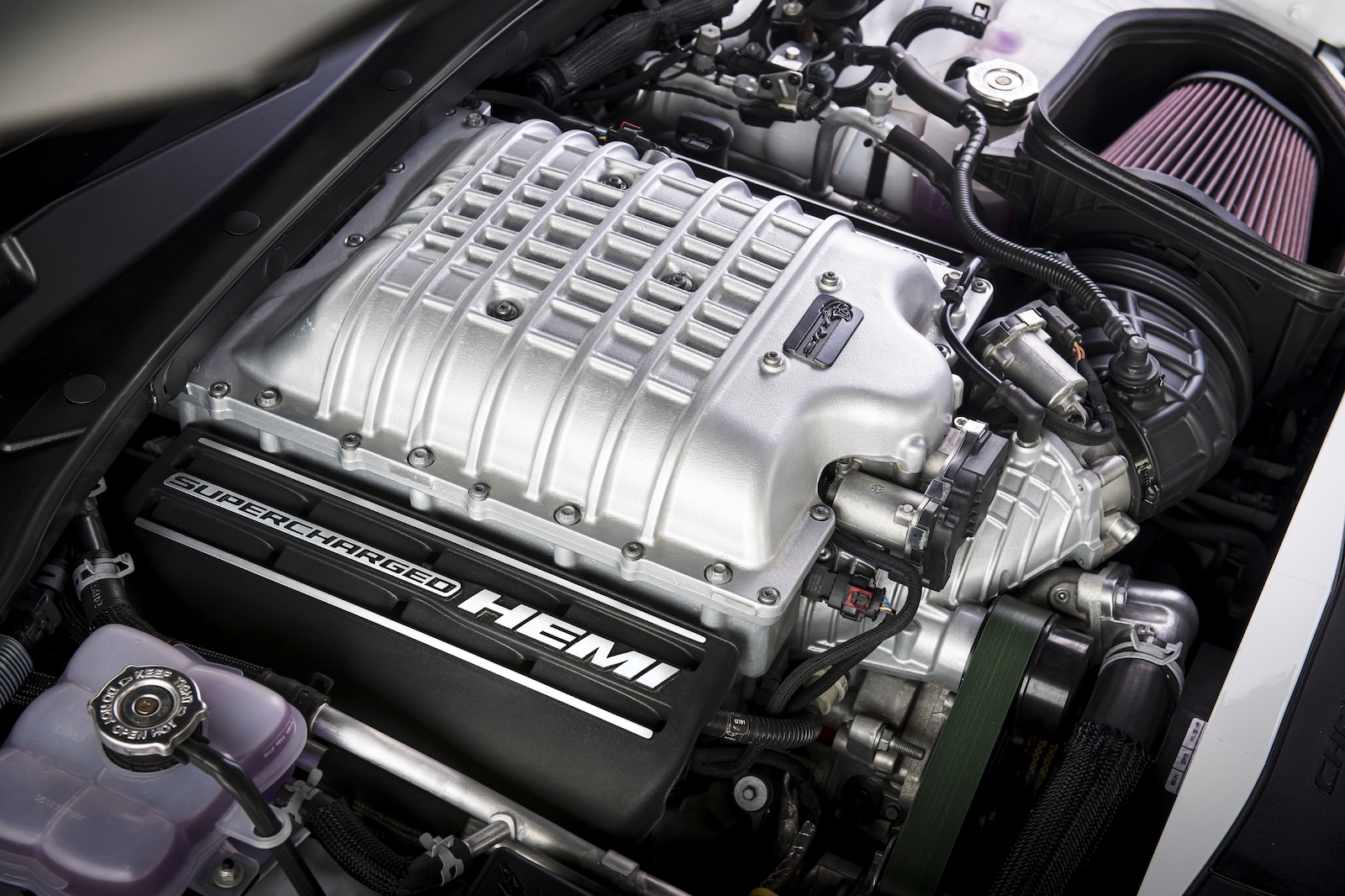
The Hellcat Redeye isupercharged 6.2-liter \high-output V-8 delivers 797 hp and 707 lb.-ft. of torque. (Photo: Stellantis)
In 2015, the most sought-after Hemi of all time—the 6.2-liter Hellcat—burst onto the scene with 707 horsepower. Three years later, the enormous 807-horsepower supercharged Redeye Hellcat Hemi dropped into the wheelie-pulling, record-setting, limited edition Dodge Challenger SRT Demon—the quickest and most powerful factory muscle car ever.
You can still buy a new vehicle with a Hemi engine. But Stellantis—the parent company for Chrysler, Jeep, Ram, and Dodge—is dropping its monster horsepower Hemi V-8s by the end of the 2024 model year to make way for its first all-electric muscle car. Until then, here is a list of Hemi vehicles that you can still grab before they’re gone:
Chrysler
- 300C
Dodge Challenger Last Call Editions:
- SRT Demon 170
- Scat Pack Swinger
- Black Ghost
- Shakedown Special Edition
Dodge Charger:
- Super Bee
- King Daytona
- Scat Pack Swinger
Jeep Wrangler
- Rubicon 392
RAM 1500 Pickup
- TRX

